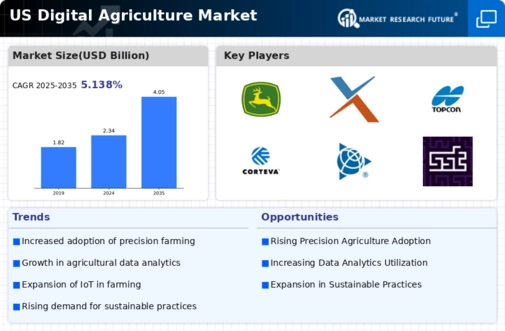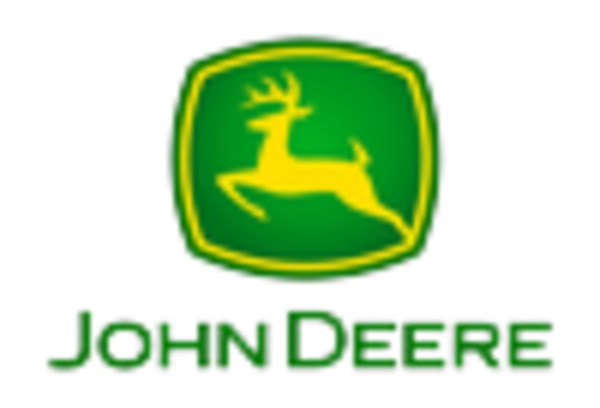Government Support and Funding
Government initiatives play a crucial role in the growth of the digital agriculture market. Various federal and state programs are designed to support farmers in adopting digital technologies. For example, the USDA has allocated significant funding to promote precision agriculture and data analytics among farmers. In 2025, it is estimated that government funding for agricultural technology could exceed $1 billion, reflecting a strong commitment to modernizing the sector. This support not only facilitates access to advanced tools but also encourages innovation, thereby driving the digital agriculture market forward.
Rising Consumer Demand for Transparency
Consumer preferences are increasingly shifting towards transparency in food production, which is influencing the digital agriculture market. As consumers demand to know the origins of their food, farmers are adopting digital solutions to provide traceability and transparency. Technologies such as blockchain are being utilized to track the supply chain, ensuring that consumers receive accurate information about their food. This trend is expected to grow, with a projected increase in demand for transparency-related technologies in agriculture by 30% by 2026. Such shifts in consumer behavior are likely to propel the digital agriculture market.
Climate Change and Environmental Concerns
The impact of climate change is prompting a reevaluation of agricultural practices, thereby driving the digital agriculture market. Farmers are increasingly adopting digital tools to mitigate the effects of climate variability, such as droughts and floods. For instance, precision irrigation systems help conserve water and improve crop resilience. In 2025, it is anticipated that the market for climate-smart agriculture technologies will reach $5 billion, highlighting the urgency of addressing environmental challenges. This focus on sustainability is likely to enhance the adoption of digital solutions in agriculture.
Technological Advancements in Agriculture
The digital agriculture market is experiencing a surge due to rapid technological advancements. Innovations such as IoT devices, drones, and AI-driven analytics are transforming traditional farming practices. For instance, the integration of IoT sensors allows farmers to monitor soil moisture levels in real-time, optimizing irrigation and reducing water waste. In 2025, the market for precision agriculture technologies is projected to reach approximately $10 billion, indicating a robust growth trajectory. These advancements not only enhance productivity but also contribute to sustainable farming practices, making them essential in the digital agriculture market.
Increased Investment in Agri-Tech Startups
Investment in agri-tech startups is significantly influencing the digital agriculture market. Venture capital funding for agricultural technology has surged, with investments reaching approximately $4 billion in 2025. This influx of capital is fostering innovation and the development of new digital solutions tailored for farmers. Startups are focusing on areas such as data analytics, automation, and sustainable practices, which are essential for modern agriculture. As these technologies become more accessible, they are expected to drive the growth of the digital agriculture market, creating a more efficient and productive agricultural landscape.
















